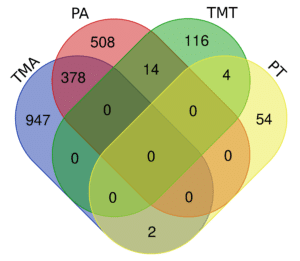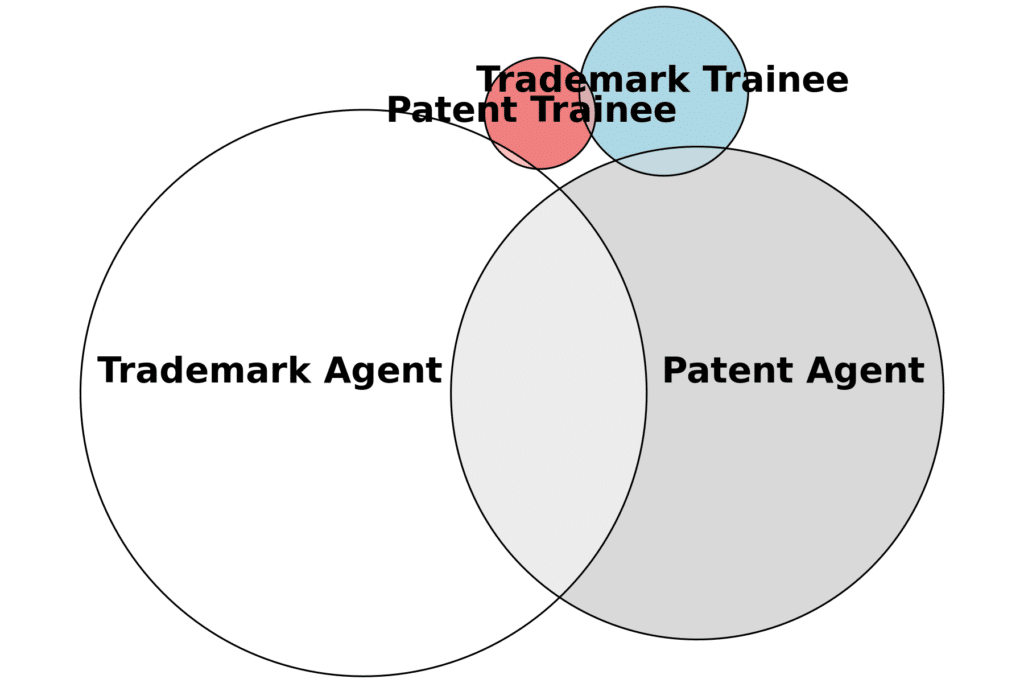For the first time, we can see how many patent agents and trademark agents there are in Canada. We also know how many are in training and the count of inactive agents. Even more interesting we can see the overlaps between patent and trademark practitioners be they a trainee or agent.
History
For decades the Canadian Intellectual Property Office licensed Canada’s patent agents and trademark agents. They set the examination for entrance to professions. The patent exam is notoriously hard – for multiple years only 1% or fewer candidates passed on their first try. CIPO was aided by the Intellectual Property Institute of Canada (IPIC), a professional body.
Starting in 1995 new systems of regulations were proposed in a series of studies and opinions. Parliament introduced changes to the law in 2015 and 2018. Since 2021 Canada’s patent agents and trademark agents are independently regulated by the College of Patent Agents and Trademark Agents (CPATA). CPATA role is to protect the public interest and they do that by licensing and setting requirements for Canadian agents.
Types and statuses of licenses
CPATA has set up a set of classes of licences and a status for each licence type.
A class 1 agent is a registered agent that can represent a member of the public. Some class 1 agents have a restriction, but this is rare.
The class 2 licence is confusing. A class 2 agent is either an inactive agent who is on leave or in process of retiring, or an agent providing limited IP services. In 2023, CPATA will create a new class of IP agents – class 4 – for agents temporarily not practicing but wishing to maintain a license.
A class 3 agent is a trainee. For example, a patent trainee must practice for 2 years under a class 1 patent agent.
An agent can have a status of active, surrendered, or suspended. A class 2 agent is of type inactive and status active – actively inactive – which is not confusing at all.
The problem
As explained in an earlier post, we lacked basic demographics on the profession. We know there are about 1000 patent agents in Canada and about 1700 trademark agents. But are all these people active? What about the intersections between the groups?
The process
CPATA now makes each practitioner’s licence number available to the public. Importantly if you hold a license for each type of IP you have a shared number so this is a licensee number.
We extracted data from CPATA in 2022 December. We recorded licensee number, name, license type, license status, and more. There are about 2800 records for approximately 2350 individuals.
Counting is fairly hard unless you have rigorous definitions. Since the licensee number is unique we counted only those with the following definitions:
- Active – Active status only no suspended or surrendered licences
- Inactive – Class 2 licence any status or any licence with status as suspended or surrendered
- Agent – Class 1 licence with or without restrictions, and active status
- Trainees – Class 3 licence, active status
About 87% of practitioners are active across both types of IP, class 1 and 3 licenses. The definitions for Agent and Trainee makes it impossible to be a trainee and an agent for the same class of IP. That is you can be a trainee for patents and a trademark agent but not a patent trainee and agent.
We simply build input sets based on these definitions, e.g., all patent practitioners, inactive patent practitioners. Then for each pair of sets, we can create an intersection – itself a set. We can count the sizes of all the sets.
Results
The results show we are a fairly active bunch with a lot of overlap by discipline (i.e., type of IP).
Active practitioners
About 2022 or 94% of practitioners are active. About 98% of patent practitioners are active across all three classes. For trademark practitioners, this drops to 92%.
The active licensee counts are:
- Active TM licensee: 1060
- Active patent licensee 559
- Active dual licensee: 398
There are about 330 inactive licensees.
We can estimate the annual income of CPATA as 2.2M$.
Basics counts
| Patent Agents (Class 1, Active) | 900 |
| Patent Trainees (Class 3, Active) | 60 |
| Trademark Agents (Class 1, Active) | 1327 |
| Trademark Trainees (Class 3, Active) | 134 |
The table shows the basic counts. There are about 2400 active licenses. Trademark agents outnumber patent agents. The same for trainees. There are more trademark trainees compared to the number of agents – 10% versus 7%.
The more important result will appear over time – are the groups of agents growing. For example, if the pass rate for patent agents continues to hold at the historic high of near 30% then agent inflow is 2% per year. It would be fairly easy to see net count drop.
Overlaps
An interesting question, especially when forecasting revenue for CPATA, is what are the overlaps? About 380 individuals are active as both a patent agent and trademark agent. This represents a 190k$ change in revenue to CPATA.
The intersections reduce the 2400 licences down to about 2000 practitioners. See the next table for intersections and those that are “just” a patent agent or trademark agent.
| Pure Set or Intersection | Count |
| Trademark Agent Only | 947 |
| Patent Agent Only | 508 |
| Patent Agent & Trademark Agent | 378 |
| Trademark Trainee Only | 116 |
| Patent Trainee Only | 54 |
| Patent Agent & Trademark Trainee | 14 |
| Trademark Agent & Patent Trainee | 2 |
| Patent Trainee & Trademark Trainee | 4 |
Plotting this is surprisingly difficult. If you use a Venn diagram most of the intersections are empty. Here is one example care of the Bioinformatics & Evolutionary Genomics group at the University of Gent, Belgium.

We can also use an Euler diagram that drops the empty intersections. As well we can scale to relative size.

This diagram comes from J. Larsson, 2021 “eulerr: Area-Proportional Euler and Venn Diagrams with Ellipses” R package version 6.1.1, https://CRAN.R-project.org/package=eulerr.
Discussion
This is another example of how People Analytics can help the public, professional bodies, and regulators. We can visualize the relative size of the groups in the profession. If we had more data we could show more. It would, for example, be nice to show:
- Agents working in-house versus on firms or agencies
- Agents also registered before the USPTO
But CPATA doesn’t make the employer information easy to get. And to compare the datasets from the US and Canada we would need to match on name which is a bit tedious but possible with fuzzy matching.
Again with more data we can answer more interesting questions.
Conclusion
CPATA, IPIC, patent and trademark agents, and the public could all benefit from improved analytics on practitioners. We see about 87% of practitioners are active. There are more trademark practitioners, but they are more likely to be inactive. About 380 individuals are both a patent agent and a trademark agent. There are about 950 trademark agents and 510 patent agents.



